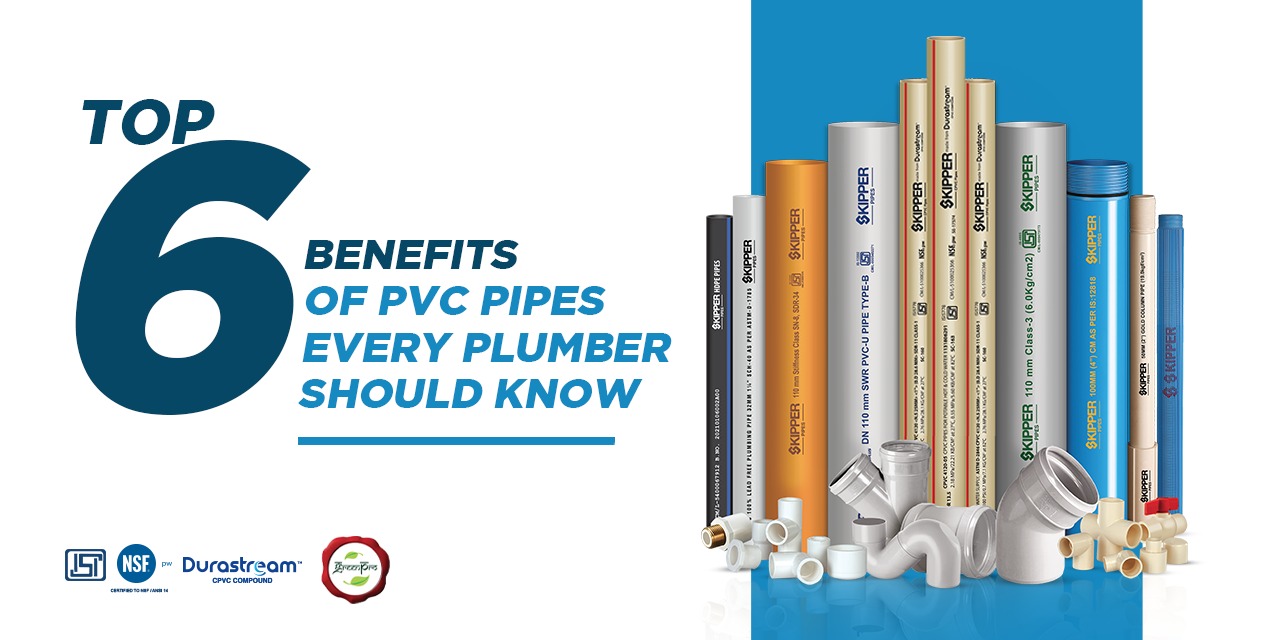What makes PVC Pipes a preferred choice for plumbers? For residential projects they are extremely useful due to their unbeatable durability and impressive corrosion resistance. In this blog, we discuss the top 8 benefits of PVC Pipes that every plumber should be aware of.
1. The Durability Aspect:
It is a well-known fact that traditional metal pipes surrender to rust and corrosion, as time progresses. But with PVC Pipes it is a different story. They have inherent resistance to chemicals and don’t corrode easily. For this reason, PVC Pipes are not only perfect for underground plumbing systems, but they are also ideal for above-ground plumbing systems. With these pipes, you get an elongated lifespan and top-notch performance. Let’s say you are installing them beneath heavy concrete slabs or directly in the ground, you don’t’ have to worry about rust or any kind of leaks.
2. Lightweight Pipes, easy maneuverability
For plumbers, ease of installation is a very important aspect. With PVC Pipes, the process becomes simplified. When compared to other metal pipes like those made of iron or copper, PVC Pipes by brands like Skipper Pipes are quite lightweight. This makes them easy to transport and handle. During installation, it is very easy to move them around and this in turn saves both effort and time. Embrace hassle-free installations with PVC Pipes.
3. Say hello to user-friendly installations
It is a well-known fact in the plumbing industry that PVC Pipes are easy to install. The solvent welding or mechanical connections create leak-proof joints which are completely secure. Minimal tools and expertise is needed for this. The installation process is simplified for not only seasoned plumbers but also the apprentices. Specialized tools or complex welding techniques will no longer be needed.
4. The Cost-effectiveness aspect
One of the key areas, a plumber mostly focuses on in residential plumbing projects is the affordability of the materials. This is why PVC pipes are a preferred option for not only the plumbers but also the homeowners. The material cost comes down greatly and the total time needed for installation is less. This makes PVC pipes a budget-friendly option for different plumbing projects. Use PVC pipes, provide competitive services.
5. Ensuring Smooth Flow of Water
The interior surface of PVC Pipes is quite smooth and this minimizes friction greatly. As a result, optimal water flow is achieved, throughout the plumbing system. With the reduction in blockages and pressure loss, the entire system performance is improved to a great extent. The difference is easily visible with PVC pipes.
6. A versatile choice
PVC pipes are very good sound insulators and they reduce noise to a great extent. But one of the main benefits of PVC Pipes is the versatility. These pipes are available in different sizes and pressure ratings. You can learn more about them, by reading this blog. Any kind of plumbing projects can be handled with PVC Pipes.
Conclusion
For plumbers, making informed decisions during material selection is very important. That’s why PVC Pipes by Skipper Pipes can be a reliable choice. By analysing the benefits of different pipes, superior materials can be selected and the best plumbing solutions can be provided to the customers.


Leave a comment